The Complete Guide to Employee Payroll Automation Software
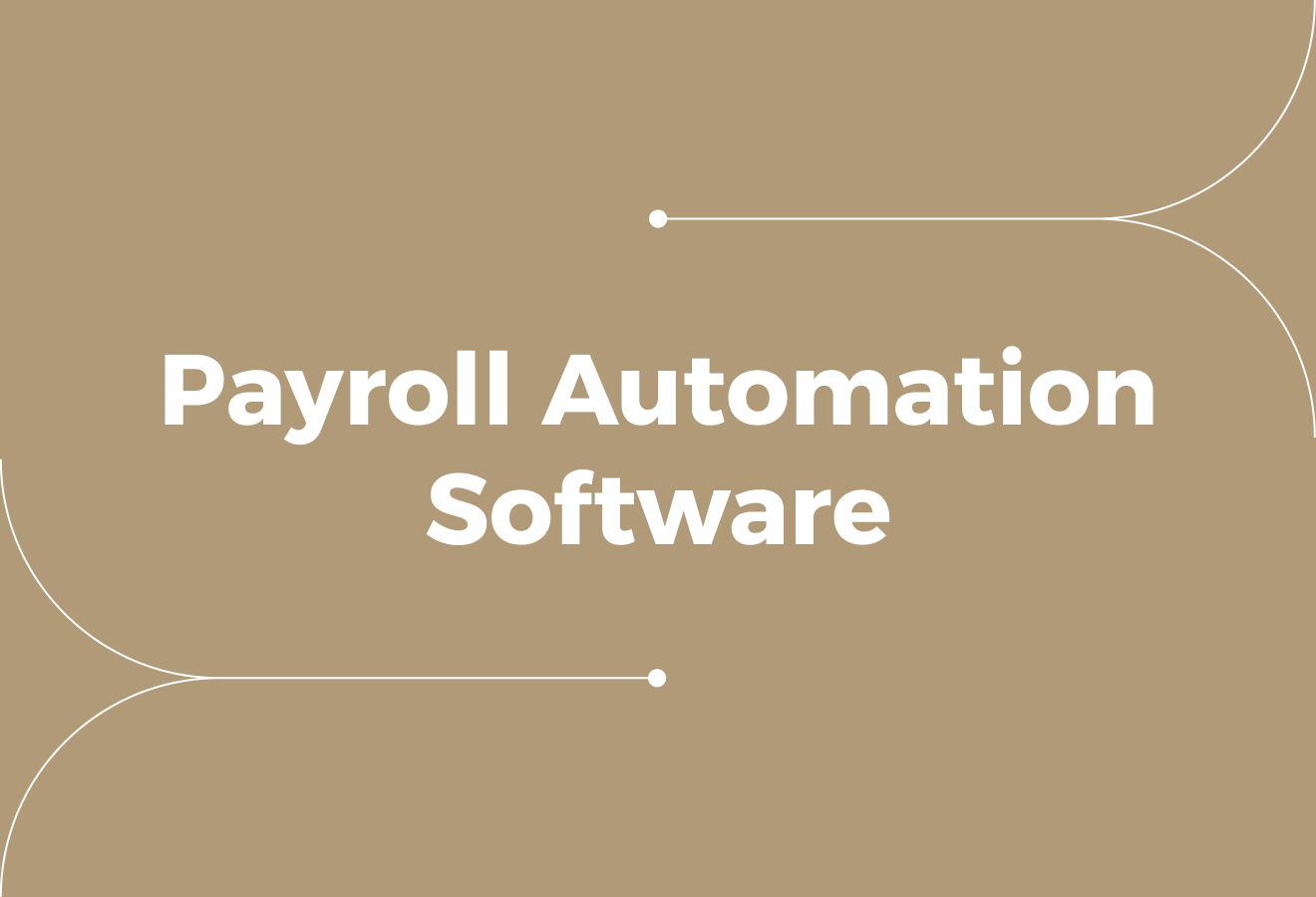
The Complete Guide to Employee Payroll Automation Software
Every pay period feels like a small emergency: you patch timesheets, correct overtime, and worry about tax errors. Small mistakes can lead to unhappy staff, late payments, and fines that harm the budget and morale. How can an employer stop fire-fighting and build a payroll process that runs itself? This article explains payroll automation, the automation of payrolls, and employee payroll automation software, demonstrating how payroll processing, payroll system integration, time tracking, tax compliance, bank transfers, pay slip delivery, and payroll reports work together to enhance payroll accuracy, streamline the payroll workflow, and save time.
Cercli’s global HR system brings payroll, attendance, benefits, and HR records into a single cloud payroll platform so you can automate salary calculation, send payroll reports and pay slips automatically, and focus on managing people instead of spreadsheets.
What is Employee Payroll Automation Software and Why It Matters
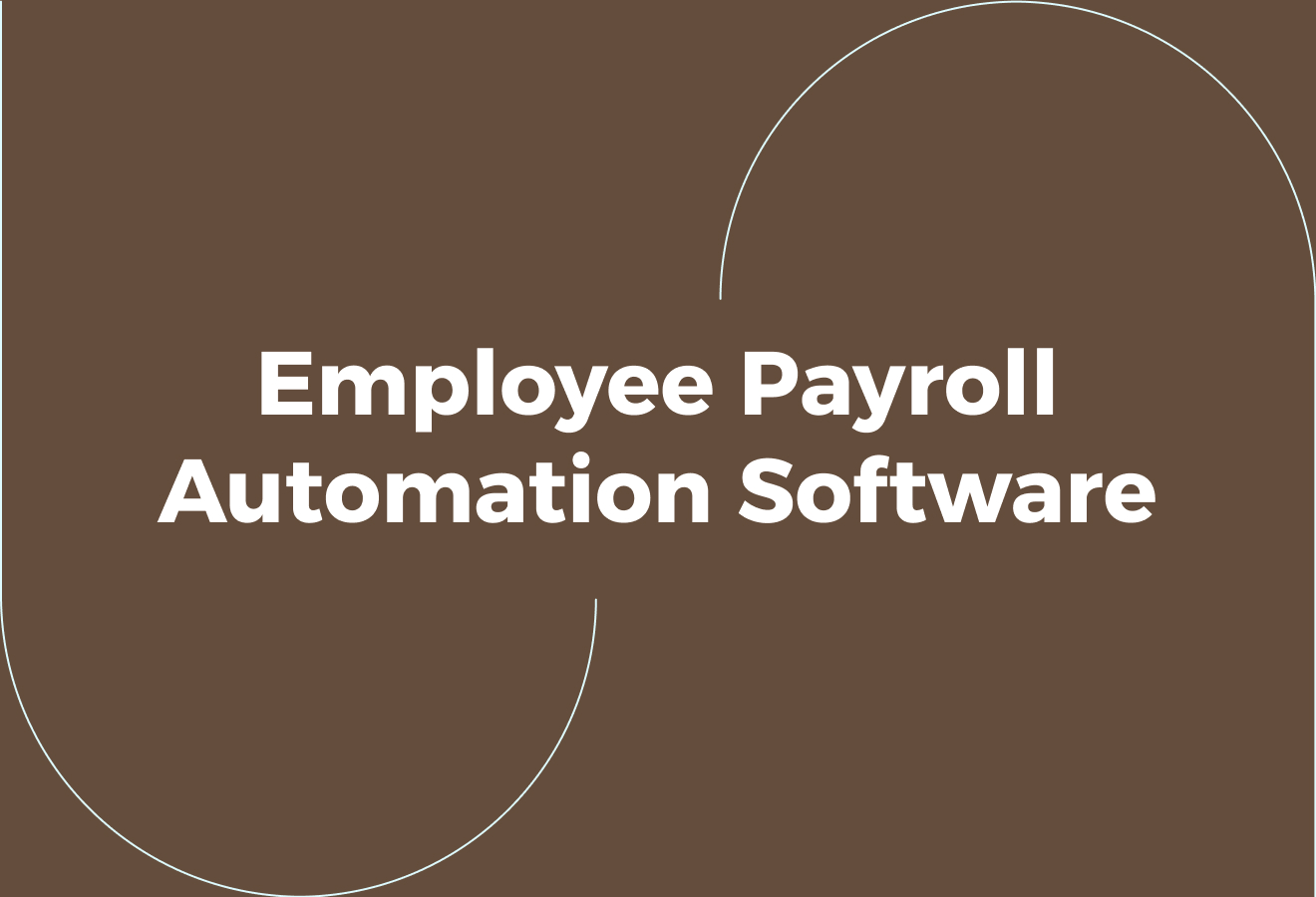
Employee payroll automation software is a system that automates payroll processing and payroll management tasks.
It calculates:
- Gross pay
- Applies statutory deductions and tax rules
- Handles overtime and allowances
- Issues pay slips
- Initiates bank transfers
The software ties together payroll rules, employee records, and payroll calendars, allowing pay runs to follow preset workflows rather than relying on manual spreadsheet work. How does it keep everything aligned across pay periods?
Core Functions and Payroll Processing Features
Key features include:
- Automated salary calculation
- Tax and national insurance computation
- Statutory deductions
- Benefits administration
- Absence and leave handling
- Payroll reconciliation
- Payroll reporting
For each transaction, the platform typically produces:
- Pay slips
- Manages year-end tasks
- Supports multi-currency and multi-jurisdiction payroll
- Records an audit trail
It also supports employee self-service for accessing pay slips and updating payment preferences, which reduces administrative queries and day-to-day interruptions.
Integration Points and System Connections
Payroll automation software usually integrates with:
- HR information systems
- Time and attendance
- Rostering and workforce management
- Expense systems
- Accounting ledgers
Integration via APIs or direct connectors ensures hours, leave and benefit changes flow into payroll without rekeying. Larger firms and service providers are centralising payroll management; industry updates note moves toward integrated global payroll solutions.
Analysts forecast the HR payroll software market to reach $18.9 billion by 2032, reflecting that shift and growing demand.
Why Payroll Teams Feel The Pressure
The move to flexible and hybrid working raises the number of pay variables to track.
A recent study found 87% of employers say flexible and hybrid work has increased strain on:
- Payroll processes
- Differing schedules
- Location-based tax rules
- Varied allowance structures multiply complexity
That creates more one-off adjustments, off-cycle runs, and exception handling for payroll teams to manage.
How Automation Changes Risk And Accuracy
Manual payroll relies on spreadsheets and human input, which increases the chance of:
- Errors
- Missed deductions
- Late payments
Automated payroll applies predefined rules consistently, logs calculations, and speeds payroll completion cycles. It also simplifies payroll audits, reduces reconciliation time, and lowers compliance exposure through consistent tax calculations and statutory reporting.
Which payroll risks would you like to reduce first?
Compliance, Security and Audit Readiness
Payroll systems maintain audit trails for:
- Every change
- Store records required for regulatory inspections
- Support statutory filings
Data protection and secure payment handling are central, including:
- Role-based access controls
- Encrypted data transfer
- Secure bank integrations
These controls help organisations meet labour law and tax obligations, as well as support internal and external audits. In the UAE, this level of compliance and transparency is critical for businesses operating in a rapidly evolving business hub like Dubai. What controls matter most in your environment?
Deployment, Scale and Global Payroll
Organisations can choose between cloud payroll and on-premise deployments, depending on their governance and integration needs. Cloud payroll enables faster updates for tax and legislative changes, supporting multi-country payroll from a single payroll engine. In contrast, on-premise solutions can meet strict data residency requirements.
Service providers can centralise payroll operations to achieve consistency across subsidiaries and reduce local complexity.
Reporting, Analytics and Operational Metrics
Payroll automation delivers standard and custom reports:
- Payroll journals
- Cost allocation
- Pay run variance
- Headcount cost
- Payroll accuracy
- Reconciliation metrics
Analytics highlight error patterns, late pays, and overtime trends, enabling continuous improvement of payroll processes and cost control. What payroll metrics would help you make better operational decisions?
Practical Questions To Assess Readiness
Do you need tighter integration with time and attendance, stronger audit trails, better employee self-service, or faster tax updates?
Start by mapping current pain points, such as manual reconciliations or frequent off-cycle runs, and match those to payroll automation features like:
- Rule-based calculations
- Bank payment automation
- Payroll reporting
Would you like a short checklist to evaluate a payroll automation solution for your organisation?
Related Reading
- Why Outsource Payroll Processing Services
- Employee Payroll Management
- What Is Payroll Management in HR
- What Is the Payroll Tax Rate
- How Much Does Payroll Processing Cost
Key Features of Payroll Automation Software
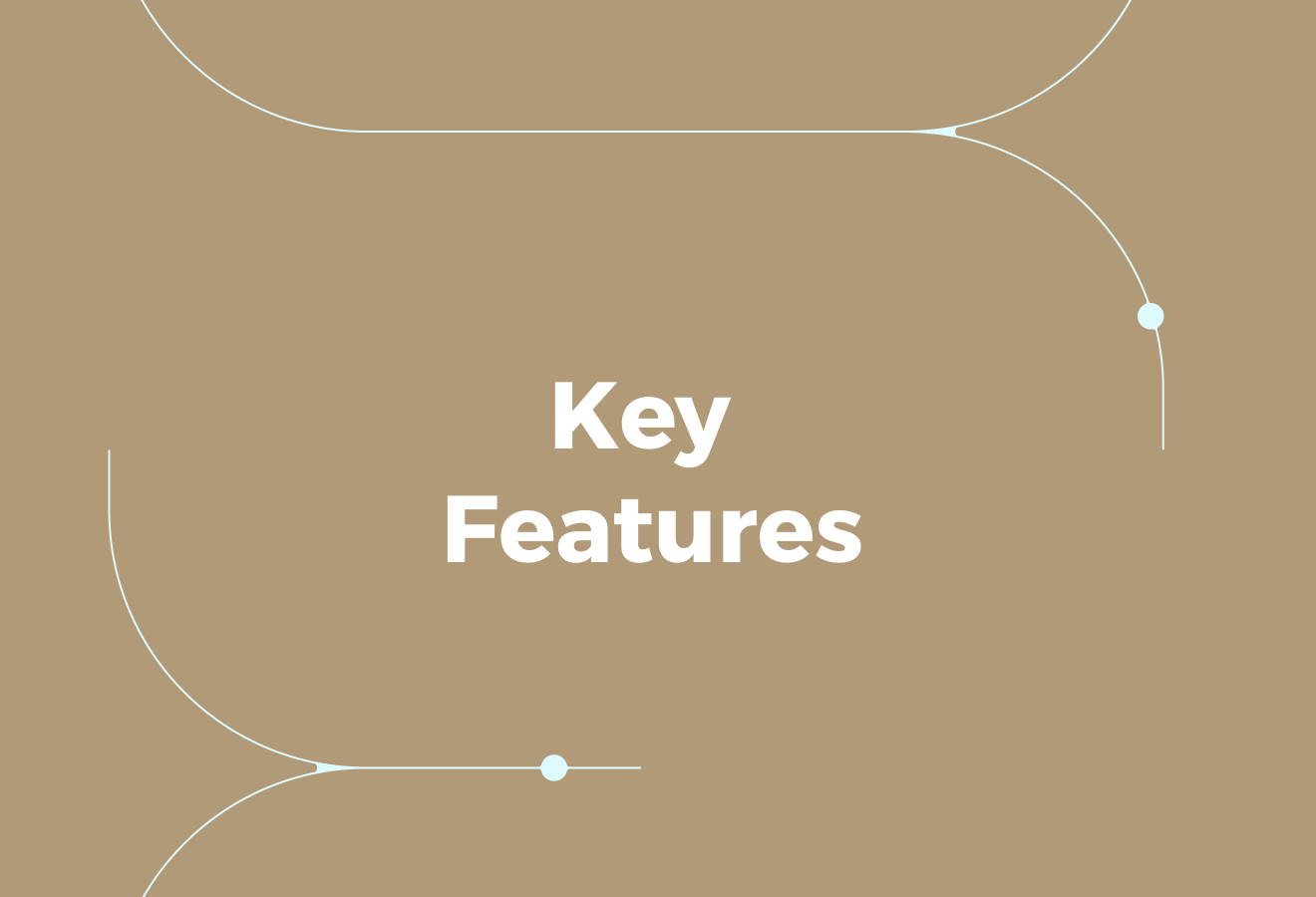
Secure Access for Your Entire Workforce
A payroll platform must provide secure, enterprise-grade Single Sign-On (SSO) functionality, allowing employees and administrators to use a single set of credentials. Give administrators elevated access to manage sensitive workforce data and system configuration while enforcing strict controls for managers and payroll staff.
For companies operating in the Middle East, offering local hosting options in the UAE or Saudi Arabia helps meet data sovereignty requirements and protect payroll records.
Real-Time Reports and Workforce Insights
Real-time reporting removes delays and reduces manual reconciliation by delivering up-to-date payroll and HR metrics on demand.
Custom filters and predefined report templates let you:
- Check leave balances
- Attendance
- Payroll costs
- Tax liabilities quickly
Exportable reports support audits and finance reviews, while automated pay slip generation ensures consistent employee records.
Role-Based Access: Control and Customisation
Create unlimited custom roles and apply permissions by location, jurisdiction or department, so people see only what they need. Granular control over access reduces the risk of accidental data exposure and helps enforce separation of duties between:
- HR
- Payroll
- Finance
Role-based workflows also speed approvals and keep an audit trail of who made each change.
Complete Visibility and Compliance Tracking
A comprehensive activity log should record every change to contracts, payroll inputs, and employee records, allowing you to trace who made the change, what was changed, and when.
Real-time alerts notify HR and finance of exceptions such as:
- Missed contributions
- Failed payments
- Out-of-policy overtime
Use these logs to support internal reviews and prove compliance with labour rules.
Enterprise Level Security
Implement certified, monitored and regularly tested security controls across data storage, application access and network layers to reduce breach risk. Strong encryption, access logging and security monitoring protect employee financial data and payroll files. Regular security tests ensure that safeguards remain current and auditable.
Compliance with Labour Laws in the Region
Embed support for regional requirements such as the WPS in the UAE, GOSI in Saudi Arabia and DEWS contributions in Dubai so payroll runs meet local rules by default. Automate statutory calculations, contribution tracking and generation of required forms to reduce errors and missed payments.
Keep tax and contribution rules up to date to reflect regulatory changes.
Integrated Payroll with Existing Systems
Integrate payroll with HR, accounting and time systems to cut manual data entry and prevent duplicate records. Bi-directional data flows ensure employee records, cost centres and journal entries stay aligned across systems. Integration also speeds the month-end close and reduces reconciliation time for payroll accounting.
Time Tracking Integration for Accurate Hours
Connect time and attendance systems directly to payroll to import hours worked for hourly or shift staff without manual re-entry. Capture overtime, shift differentials, and absences accurately so pay runs are correct the first time.
Fewer manual transfers lower disputes over hours and simplify payroll audit trails.
Direct Deposit and Payment Reliability
Support reliable direct deposit to banks to give employees fast, secure access to pay and to reduce cheque handling. Automate payment runs, bank file generation and reconciliation so payroll teams spend less time on manual bank work.
Track payment status and exceptions to resolve failed transfers quickly.
Expense Management and Reimbursements
Automate the capture, approval and payment of employee expenses so reimbursements post reliably to payroll or AP. Keep digital receipts and approval histories attached to each claim for audit purposes. Integration with payroll ensures taxable benefits and reimbursements are treated correctly.
Employee Self-Service that Reduces HR Work
Provide employees with self-service tools to update their personal details, view pay slips, request leave, and check balances, allowing HR to handle fewer routine queries. Self-service reduces administrative workload and enhances data quality when staff maintain their own records. Managers can approve requests in the system and keep track of logged changes.
Tax Compliance and Filing Automation
Automate tax calculations, filing of returns and preparation of year-end documentation to reduce late submissions and miscalculations. Keep tax tables and rates up to date so payroll runs accurately reflect the latest rules. Automated filing workflows reduce manual steps and simplify interactions with tax authorities.
A Single Platform for Regional Compliance
Cercli is designed for companies in the Middle East who need a flexible, compliant, and reliable way to manage their workforce, whether teams are:
- Local
- Remote
- Spread across multiple countries
As a comprehensive HR system, Cercli supports WPS processing in the UAE, GOSI in Saudi Arabia, DEWS contributions, multi-currency payroll, Employer of Record services, and compliant international contracts, allowing you to manage payroll and compliance from a single platform.
Benefits of Using Payroll Automation Software
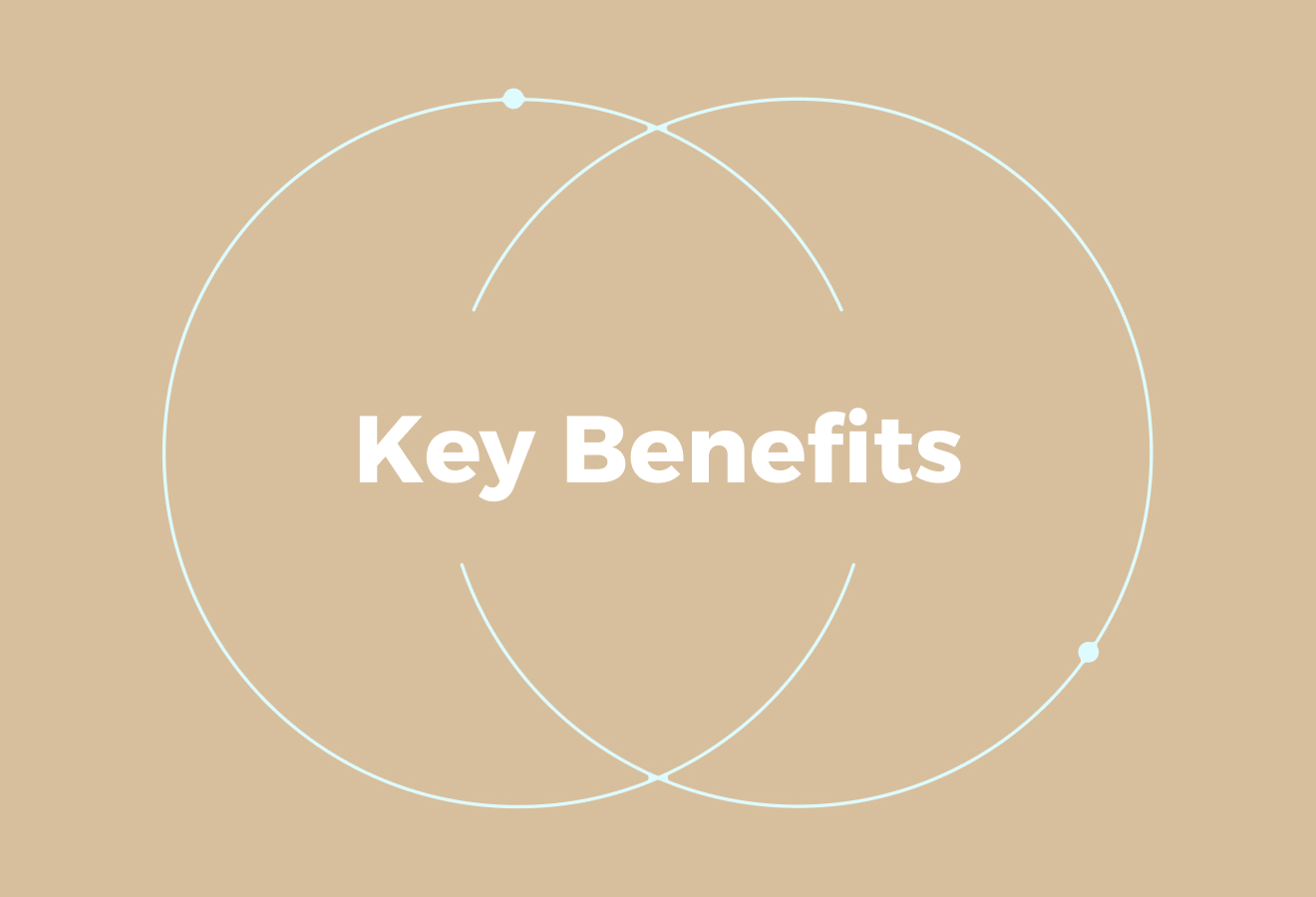
Faster Pay Runs That Cut Late Payments
Payroll automation streamlines payroll processing by automating routine calculations, allowing payroll staff to focus on addressing exceptions. In 2023, 44% of employees reported being paid late by their employer, indicating that manual processes can still cause delays.
When a payroll system handles gross pay, net pay, deductions, tax calculations, and hours from timesheets, the payroll run proceeds more efficiently. The need to chase late payments and manual reconciliations is eliminated.
Fewer Mistakes From Automated Calculations And Integrations
Automatic payroll calculations reduce human error from manual calculations and rekeying. Integrating payroll with HR systems, time and attendance, and expense platforms removes duplicate entry and the common mismatches that trigger corrections.
The payroll team can then dedicate time to anomalies rather than repetitive data entry. This results in fewer pay enquiries and correction runs.
Clear Audit Trails And Simpler Approvals
A payroll system records approvals and keeps an audit trail for every pay run and adjustment. This makes audits easier and ensures compliance with payroll legislation and internal policies. Workflow approvals in the system also act as signals to payroll staff that data is authorised and ready to process.
Removing paper approvals and email chains can reclaim a significant amount of time.
Lower Costs And Higher Productivity
Automating payroll shortens the payroll cycle, allowing staff who review and approve payroll to move on to other tasks sooner. Companies that use payroll automation report being 33% more efficient. Automation reduces rework and error correction, which in turn cuts operating costs and allows payroll and finance to focus on higher-value activities.
This frees up your team to focus on strategic tasks.
Improved Data Security And Controlled Access
Automation reduces the need to extract payroll data and email spreadsheets. Instead, staff get role-based access to the payroll system and view only the information they need. System interfaces can securely pass payroll data to finance, banking, and benefits platforms without exposing files to unauthorised users.
Tighter access controls significantly reduce the risk of data breaches.
Employee Self-Service That Reduces Enquiries
Without contacting payroll, self-service portals let employees:
- View payslips
- Check year-to-date balances
- Update personal details
This frees payroll to handle complex questions and policy exceptions while employees get faster answers. A self-service option significantly improves service levels.
Real-Time Reports And On-Demand Insights
Payroll software delivers standard reports and lets authorised users build custom reports using live data. You can pull a report showing year-to-date balances for all employees or payroll-related expenses for a period. This reporting supports payroll, finance, and HR with accurate numbers for forecasting and compliance.
Your entire business benefits from faster access to payroll analytics.
7 Popular Payroll Automation Software Tools
1. Cercli: Middle East Payroll and Cross-Border Payroll Management
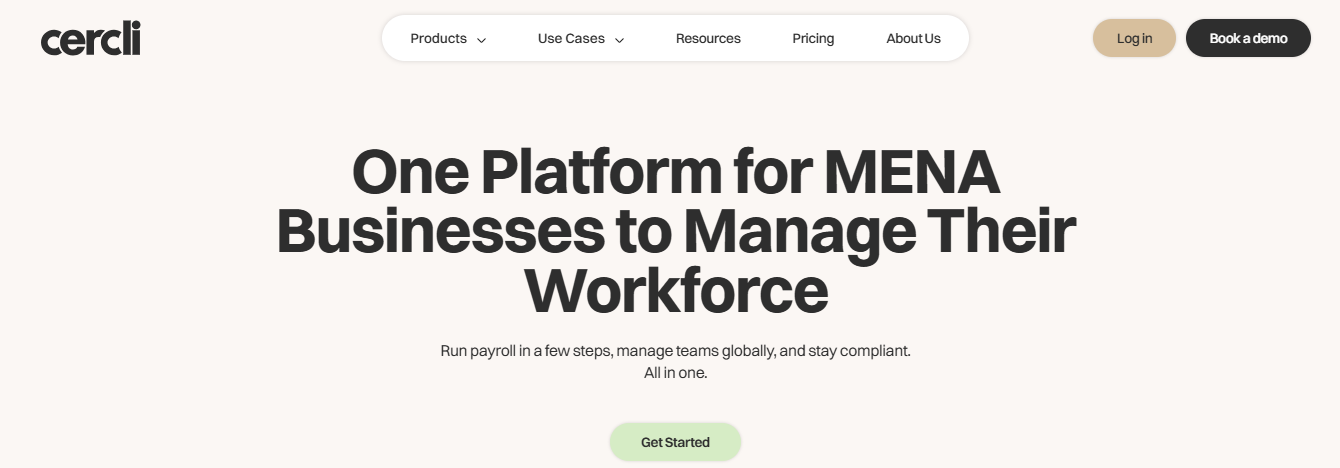
Cercli is a payroll and workforce management platform built for organisations operating in the Middle East. It focuses on local regulatory compliance and practical payroll processing, enabling teams to manage employees across the UAE, Saudi Arabia, and the wider MENA region with fewer administrative tasks.
It supports Wage Protection System registrations and processing in the UAE and handles General Organisation for Social Insurance contributions in Saudi Arabia.
Global Payroll and Centralised HR Operations
Need to pay teams across borders? Cercli enables multicurrency payroll and Employer of Record services to pay contractors and full-time employees in more than 150 countries.
The platform also centralises HR operations, including onboarding, asset management, leave tracking, payroll runs, and offboarding, so HR and payroll data are stored in one place.
2. Oracle: Enterprise Scale Payroll In Fusion Cloud HCM
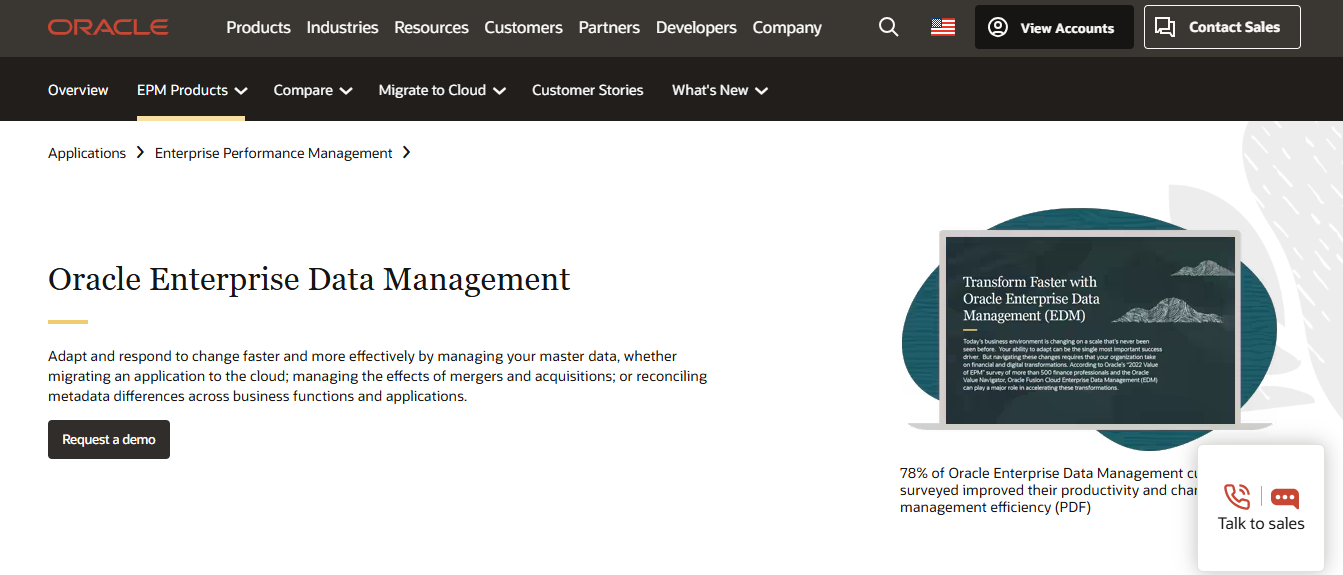
Oracle offers a configurable payroll engine integrated within Oracle Fusion Cloud Human Capital Management, enabling global payroll processing and statutory compliance. The solution supports payroll management for more than 160 countries, with localised tax and statutory deduction rules, and allows effective date transactions, configurable fields, and country-specific HR data that flow into payroll.
Advanced Scalability and Complex System Integration
Expect a high degree of scalability combined with complex configuration requirements and detailed reporting that often need technical support. Corrections and delta processing commonly run as off-cycle payments, and data synchronisation between modules can create delays.
Online verification, approval, and a joint HR, finance, and payroll workspace are available when both ERP and HCM are purchased.
3. Keka: Streamlined Payroll For GCC Operations
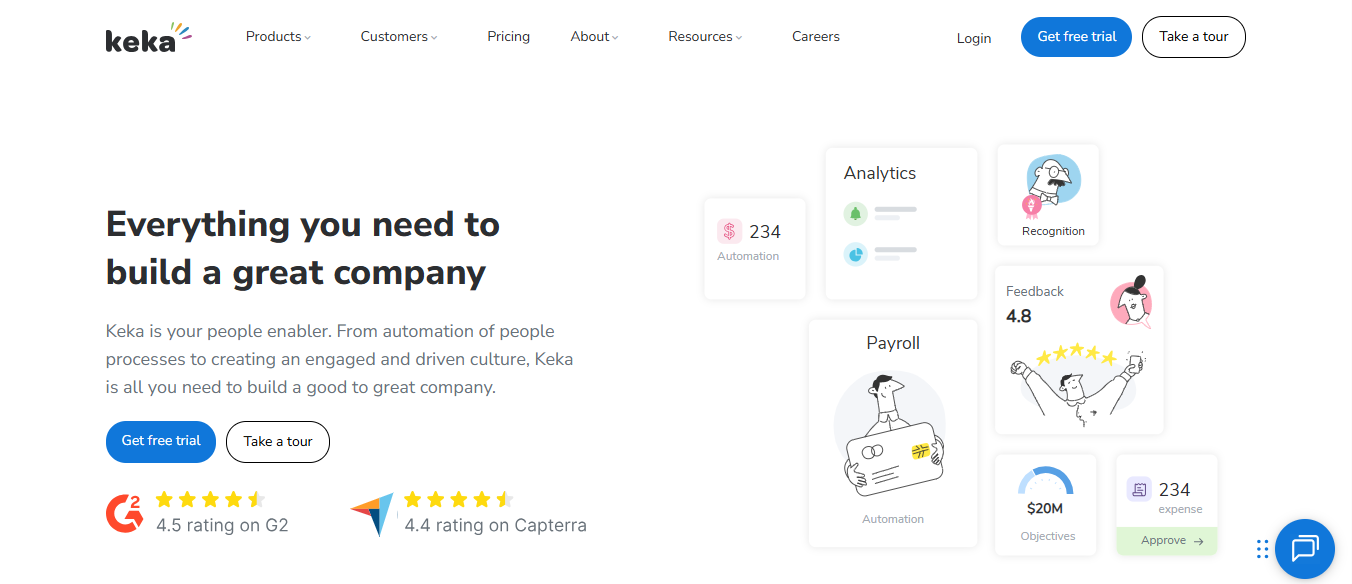
KEKA links annual leave and attendance data into a 5-step payroll process that aims to reduce manual data entry and syncing issues while covering GCC and broader Middle East compliance. The system handles WPS GPSSA and end-of-service gratuity calculations and lets organisations manage multiple business units on a single platform.
It integrates with third-party accounting tools, including Zoho Books, Tally, SAP, Xero, and QuickBooks. It provides employees with self-service access to payslips, loans, salary breakups, and expense claims via a mobile app. For delta changes, the admin must perform a payroll rollback, which can increase the risk of calculation errors during reconciliation.
4. PeopleStrong: Configurable Payroll With Reporting And Self Service
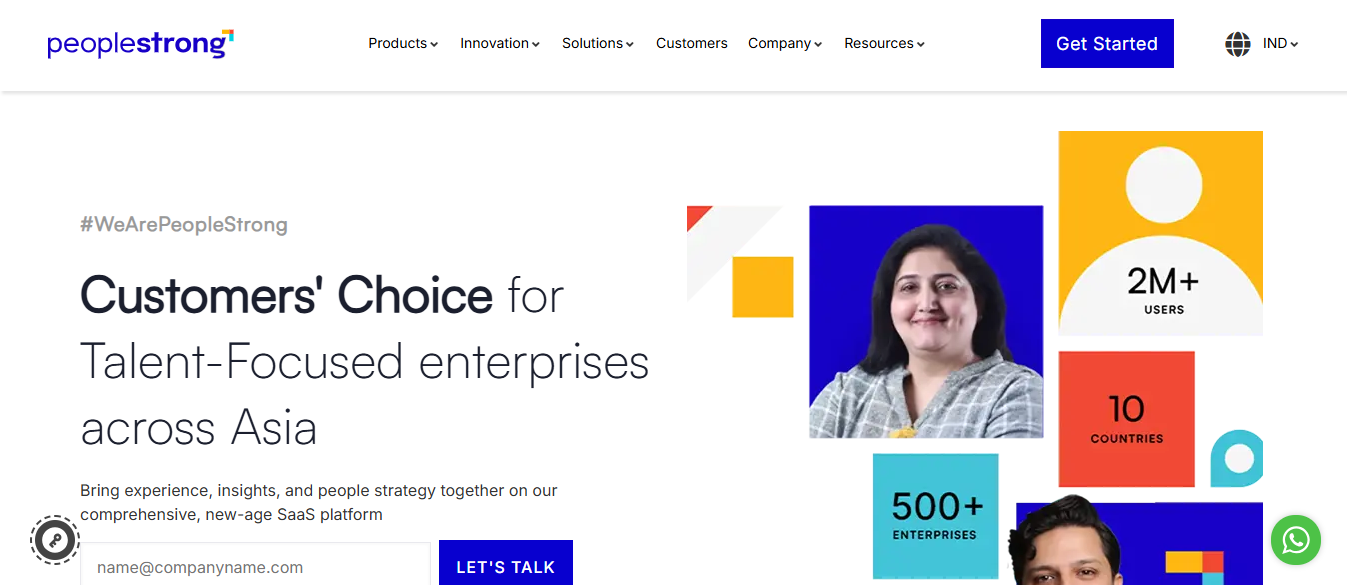
PeopleStrong offers configurable salary structures, payslip formats, pay periods, and approval workflows while automatically calculating statutory items such as:
- EPF
- TDS
- ESI
It provides rich analytics with a custom report builder, plus 350 pre-defined reports and configurable dashboards for payroll analytics and variance checks.
Enhanced Employee Experience Versus Backend Friction
Employees get 24/7 self-service access to payslips on mobile and can scan and upload bills for reimbursements. Large deployments report data sync delays of around 3 to 4 hours, and the verification and approval workflows are not fully connected with the payroll processing engine, which can complicate payroll runs and off-cycle adjustments.
5. Bayzat: UAE Native Payroll With Expense and Loan Control
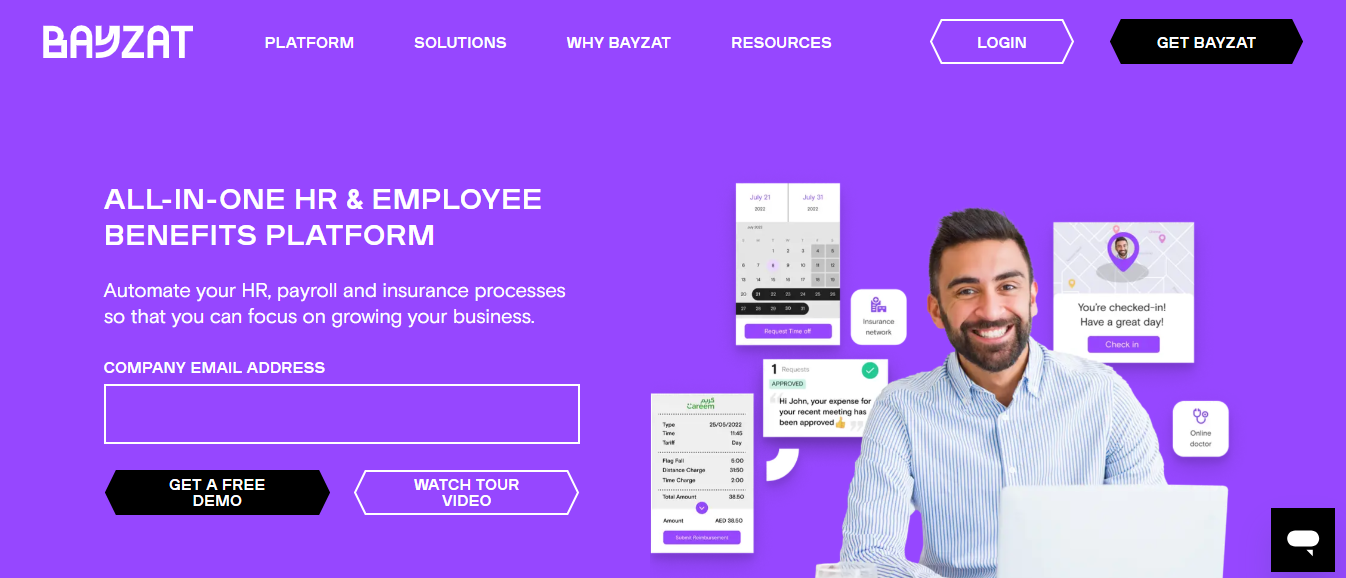
Bayzat is locally developed in the UAE and automates payroll calculations with a simple setup for custom payroll cycles and loan processing. It supports accounting integration and expense management, so payroll entries and general ledger postings tie back to finance systems, reducing accounting errors.
Template Efficiency Versus Service Limitations
The platform offers over 100 customised payroll templates for reporting and faster payslip generation, aiming to simplify salary advances and loan repayments. Several users report slower customer support turnaround times and limited customisation options, and the pricing structure may not suit every organisational type.
6. ZenHR: Bilingual Payroll With Mobile Employee Self-Service
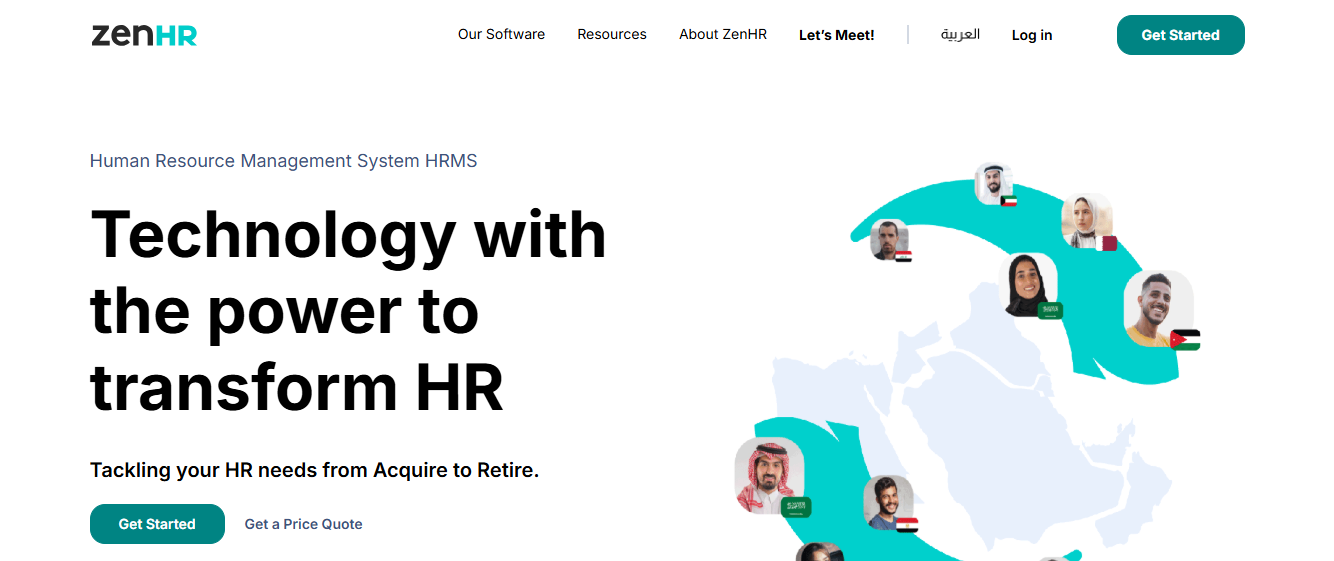
ZenHR offers a bilingual user interface in English and Arabic, as well as a bilingual mobile app that provides employees with access to payslips, time and attendance records, leave requests, and shift schedules. Its payroll module automates salary deductions and calculations and supports localisation for WPS, social security, GOSI, and standard tax requirements.
ZenHR integrates with GOSI Mudad Business and Muqeem in Saudi Arabia, calculating vacation in advance and notifying employers about employee return dates. The product excels in employee experience but lacks sufficient integration and customisation options for businesses with specialised payroll workflows.
7. gulfHR: Long Standing Middle East Payroll and Compliance Support
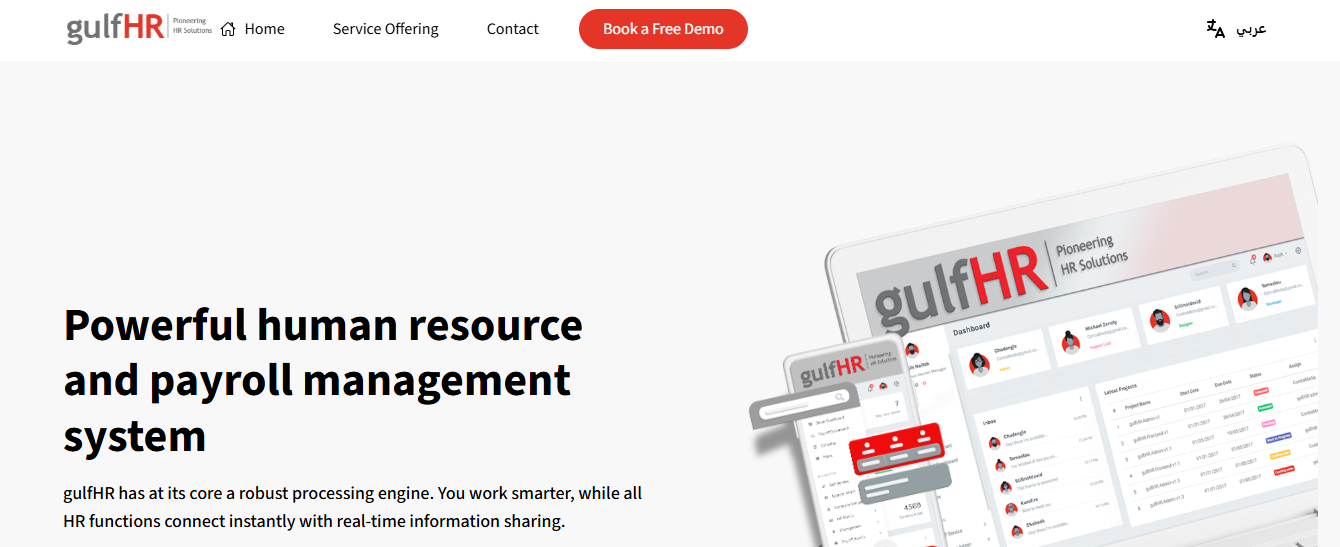
gulfHR is a cloud-based payroll solution designed specifically for Middle East countries, featuring an Arabic interface and over 20 years of regional presence. The software focuses on simplifying local compliance and legislation, allowing organisations to customise payroll processing to their specific needs.
Compliance and Effortless Payroll Management
Features include:
- Payroll report generation
- Salary advance processing
- Password protected
- Payslips customised
- Payroll processes
- Automatic compliance updates
- Multiple language support
HR and payroll teams can run regular payroll cycles while keeping statutory obligations up to date.
Related Reading
- How Does Payroll Processing Work
- AI in Payroll Processing
- Benefits of Payroll Outsourcing
- Payroll Automation Benefits
- Payroll Tax vs Income Tax
How to Implement Payroll Automation in Your Organisation

Select a payroll system that matches the size of your organisation and the complexity of your pay rules.
Look for:
- Payroll processing
- Statutory reporting
- Automated calculations
- Bank transfer or direct credit
- Employee self-service
- Integration with HRIS and accounting
- Reporting
- Analytics
Ask vendors about support for:
- Payroll taxes
- Wage garnishments
- Pension contributions
- Statutory pay
Define ownership for the vendor relationship and handling upgrades and compliance patches.
Gather and Enter Accurate Employee Data
Collect full employee records:
- Legal name
- Emirates ID details
- Address
- Payment method
- Bank details
- Benefits enrolments
- Any compensation agreements
Enter pay rates, allowances, and deduction rules into the payroll system, and attach documents such as contracts and tax forms. Check permissions and access control protocols so only authorised staff can edit sensitive payroll data.
Connect Time-Tracking and Attendance to Payroll
Sync your timekeeping or attendance tool with the payroll system so hours, overtime, and paid time off flow automatically into each pay calculation.
If you use manual data entry, define:
- Clear rules for rounding
- Overtime thresholds
- Approvals
Clarify who approves timesheets and by what deadline. Set automated alerts for missing or late submissions to prevent delays in pay runs.
Define Pay Schedules and Operational Deadlines
Set the pay frequency you will use, for example, weekly, bi-weekly, monthly or semi-monthly, and programme those pay runs into the payroll engine.
Create deadlines for:
- Timesheet submission
- Manager approvals
- Payroll finalisation
Publish a calendar of cut-off dates for payroll staff and employees to ensure clear expectations for payslips and bank transfers.
Configure Compliance Rules, Deductions and Benefits
Enter compliance rules, pension schemes, statutory leave payments, and any employee deductions such as benefits or union fees. This is often simpler in regions like the UAE, where processes are governed by the Ministry of Human Resources and Emiratisation (MoHRE).
Use the system’s compliance update feature to apply current statutory regulations and automatic calculations. Test deduction sequencing so net pay and employer liabilities are calculated correctly.
Run A Full Test Payroll Before Going Live
Execute a sample pay run that mirrors a real cycle, including:
- New joiners
- Terminations
- Overtime
- Diverse deduction scenarios
Inspect payslips line by line and reconcile totals with the general ledger. Rework rules that produce mismatches and repeat the test until calculations, statutory submissions and bank files are correct. Determine who signs off on the final reconciliation.
Prepare Payroll Reporting and Compliance Flows
Set up:
- Statutory reporting
- Year-end submissions
- Regular management reports
Automate electronic payslips and employee self-service, allowing staff to view payslips and leave balances. Configure audit trails and role-based access controls to ensure payroll actions remain traceable and secure.
Train Staff and Define Payroll Workflow
Train:
- Payroll administrators
- Managers
- HR on:
- New processes
- Approvals
- Exception handling
Document the payroll workflow, including escalation steps for errors and a schedule for reconciliations.
Assign clear ownership for tasks such as:
- Statutory submissions
- Pension auto-enrolment
- Employee queries
Go Live And Keep The System Accurate
Launch automated pay runs once testing and staff training are complete. Monitor the first few cycles closely for:
- Missed timesheets
- Bank file errors
- WPS confirmation receipts
Keep employee records up to date when hires, leavers, salary changes or benefits adjustments occur. Schedule periodic audits and review payroll analytics to identify anomalies that may indicate configuration issues or fraud.
Related Reading
- Payroll Management Software Features
- How Is Payroll Tax Calculated
- Best Payroll Software for Small Businesses
- How to Do Payroll for a Small Business
Book A Demonstration To Speak With Our Team About Our Global HR System
Cercli allows HR and payroll teams to manage the entire workforce from a single system. You can run payroll for employees based in the UAE, a key international business hub, Saudi Arabia, and other MENA countries, while also covering staff and contractors across 150 countries.
The platform combines a payroll engine, HR information system, and contractor payment tools so teams stop juggling spreadsheets and isolated systems.
Run Compliant Payroll Across the UAE, Saudi Arabia, and The Wider MENA
Automated payroll processing applies statutory rules for salary calculations, social contributions, and end-of-service accruals. Cercli maps local statutory deductions and regional labour rules so payroll runs reflect current compliance requirements.
The system also automatically creates payroll journals and payslips, and supports bank integrations for direct credit and local payment mandates.
Time, Attendance, Leave, and PTO Management That Works
Track hours, sync timesheets, and automate leave approvals in one place. Cercli connects attendance data to payroll so overtime and absence carry through to salary calculations.
Managers gain a clear view of headcount and leave balances, while employees utilise self-service tools for submitting requests and accessing pay slips.
Onboarding, Offboarding, and Employee Records Without Paper
Cercli automates employee onboarding workflows, collects documents, and builds a clean employee master record.
Role profiles connect to:
- Payroll structures
- Benefits plans
- Access rights
When someone leaves, the system calculates final settlements, updates payroll, and preserves an audit trail for HR and finance teams.
Asset Tracking and Company Property Control
Record devices and company property against individual employee profiles. Asset checkouts, returns, and depreciation tracking are all fed into your compliance and audit reports. Asset management reduces losses and makes audits more efficient.
Multi-Currency and Cross-Border Contractor Payments
Handle:
- Contractor onboarding
- Tax classification
- Invoicing in multiple currencies
Cercli supports contractor payments across borders and records contractor ledger entries separately from employee payroll. That reduces manual foreign exchange calculations and speeds payment cycles.
Scale Payroll from 25 to 500+ Staff with Repeatable Rules
Utilise role-based salary structures and configurable payroll rules to onboard new markets without requiring the rebuilding of existing processes.
Cercli applies consistently:
- Gross-to-net calculations across entities
- Enforces multi-country payroll calendars
- Maintains an audit trail for every change
Integrations, API, and Accounting Synchronisation
Cercli integrates with time systems, HR tools, and accounting software to automate journal entries and reconciliation. The API supports real-time data synchronization, ensuring payroll, general ledger, and bank records remain aligned, and finance teams reduce their month-end effort.
Security, Data Residency, and Audit Controls
The platform enforces role-based access, encryption at rest and in transit, and detailed audit logs for payroll actions. You can restrict views by country and preserve data residency where required by local regulations.
Payroll Reporting, Payroll Analytics, and Reconciliation
Generate payroll registers, tax reports, and variance analysis automatically.
Cercli gives HR and finance teams reconciliation tools to:
- Compare payroll runs
- Confirm bank files
- Export reports for auditors
How Cercli Helps HR Reduce Risk and Save Time
Cercli reduces manual entry, cuts calculation errors, and enforces compliance through rules and audits. Payroll teams get faster run times, fewer exceptions, and more precise control over payroll cycles.
Want to see Cercli in action and test payroll automation for your specific markets? Book a demonstration to walk through payroll scenarios, compliance checks, and contractor workflows so you can see how the platform fits your operations.










